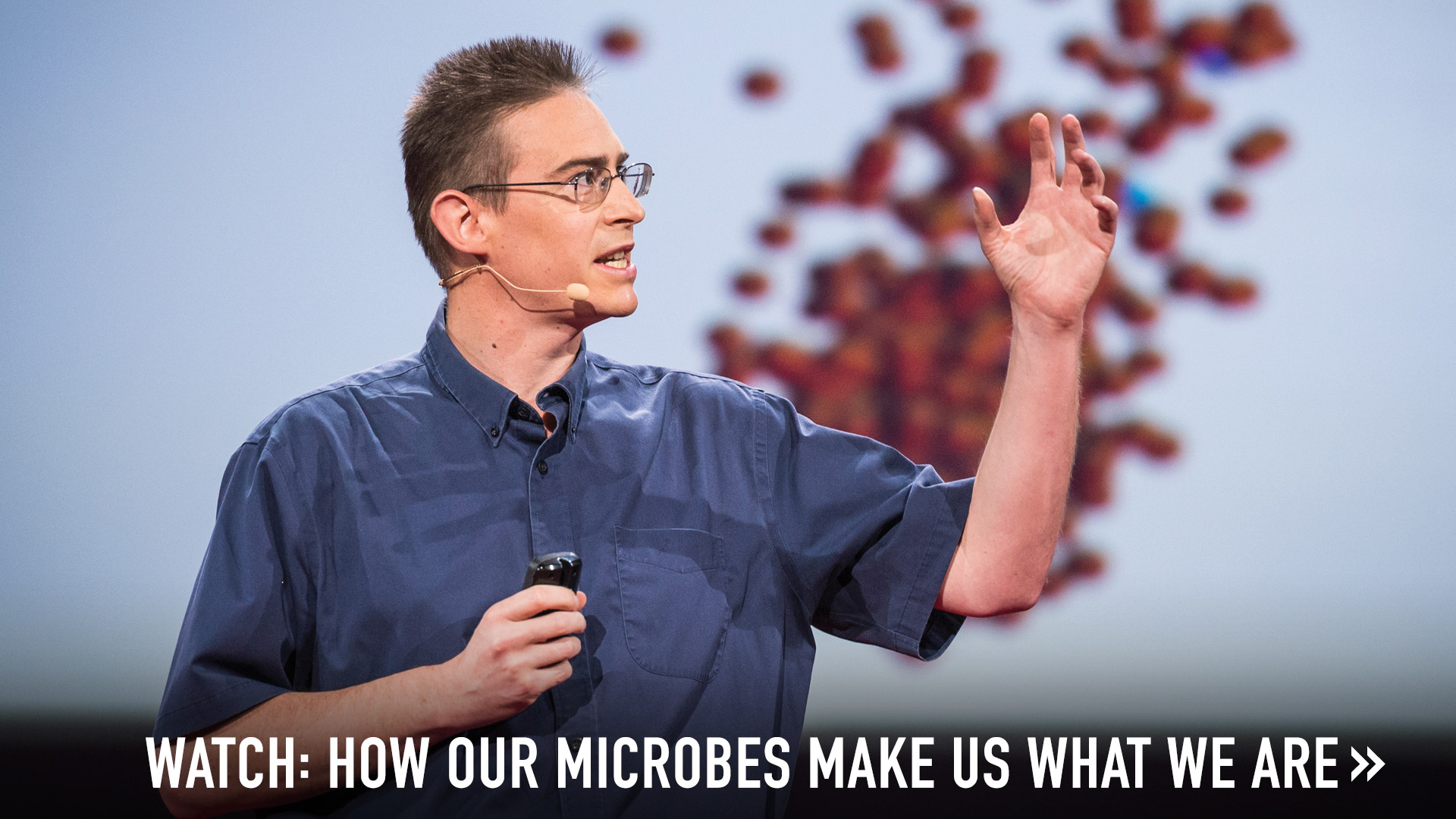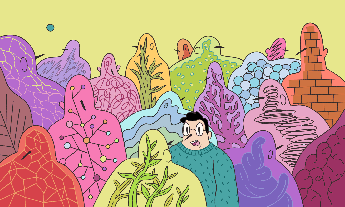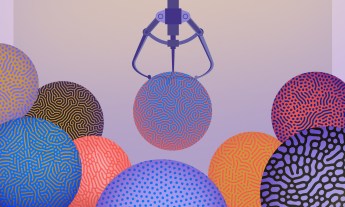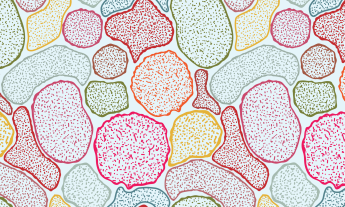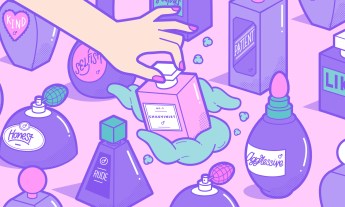
As both a scientist and a human being, I am continually awestruck by discoveries about the power of the microbiome to define and shape us. But what excites me most is the very real prospect that, as we come to better understand and even influence the microbiome, it could have the power to heal us.
We’re already starting to link our microbes to a wide spectrum of specific diseases, from the obvious — like infectious diseases and inflammatory bowel disease — to surprising ones such as multiple sclerosis, autism, and depression.
It’s worth noting that just because we know a microbe is involved in a specific disease, it doesn’t mean the answer — or the cure — is to eliminate that microbe. In fact, doing so might cause irreversible damage. It may turn out that targeting diet or inhibiting an enzyme (that’s a protein that speeds up a particular chemical reaction) might be more effective than attacking the microbes directly. And yet the reason there is so much excitement about the microbiome is the prospect of discovering entirely new mechanisms to treat conditions that have resisted existing therapies.
susceptibility to essentially every kind of infection hinges greatly on genetics.
But first, let’s ask: How is it we know that certain microbes are associated with particular diseases?
The easiest cases to make are those where one particular microbe has a significant impact on health, which essentially describes the last 150 years of infectious disease research. If you get exposed to a microbe such as Salmonella, or Giardia, or Mycobacterium tuberculosis (the bacterium that causes tuberculosis), you expect to get sick. And then, if you treat it with the right antibiotic (or other drug), you expect to get better.
But wait: Do you always get sick just because you’re exposed?
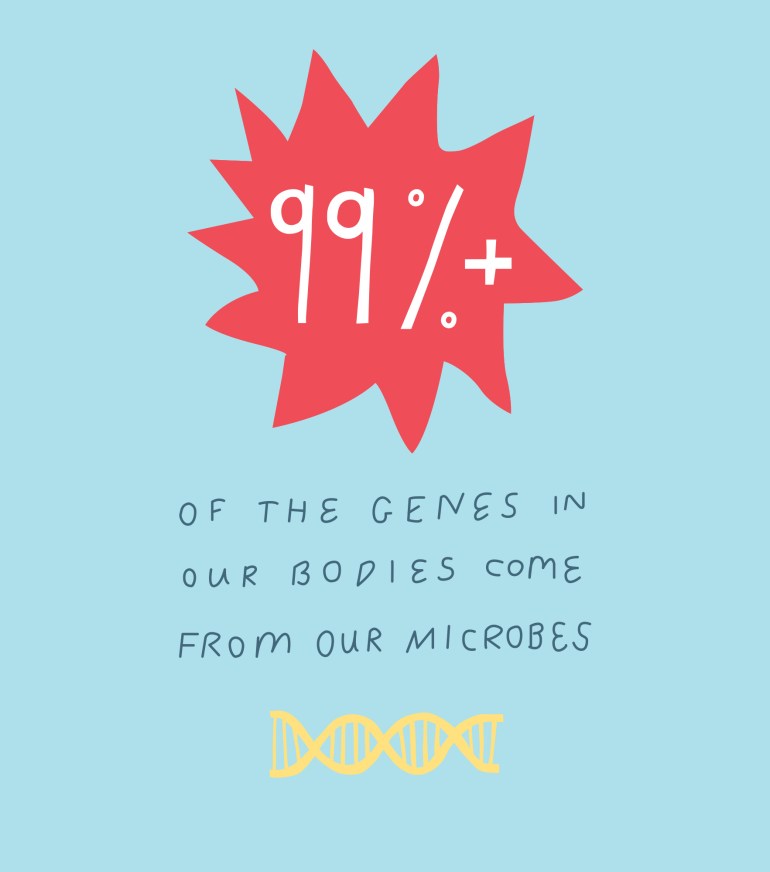 Actually, our risk of sickness depends on a combination of exposure, genetic makeup, and other factors. Some people are born with resistance to certain diseases. You’ve probably heard of Typhoid Mary, a New York cook in the early twentieth century who carried the bacteria that causes the disease typhoid fever. She infected family after family with her excellent cooking that was laced with a dose of her not-so-excellent microbes. But Mary was never sick. She was naturally immune to the fever she carried inside her. Where does such resistance come from? Well, it’s these questions that make mouse studies popular with researchers: besides the fact that we can more ethically give a mouse an infection, we can also manipulate the mouse’s genome. From these studies, we’ve learned that susceptibility to essentially every kind of infection hinges greatly on genetics. And mouse versions of Typhoid Mary are easy to create in the lab — not just for typhoid fever but also for a whole range of other infections. It’s proof that our genes influence which microbes make each of us sick.
Actually, our risk of sickness depends on a combination of exposure, genetic makeup, and other factors. Some people are born with resistance to certain diseases. You’ve probably heard of Typhoid Mary, a New York cook in the early twentieth century who carried the bacteria that causes the disease typhoid fever. She infected family after family with her excellent cooking that was laced with a dose of her not-so-excellent microbes. But Mary was never sick. She was naturally immune to the fever she carried inside her. Where does such resistance come from? Well, it’s these questions that make mouse studies popular with researchers: besides the fact that we can more ethically give a mouse an infection, we can also manipulate the mouse’s genome. From these studies, we’ve learned that susceptibility to essentially every kind of infection hinges greatly on genetics. And mouse versions of Typhoid Mary are easy to create in the lab — not just for typhoid fever but also for a whole range of other infections. It’s proof that our genes influence which microbes make each of us sick.
We’re beginning to realize that there may be many more diseases where we’re all exposed to the same microbe, but it’s dangerous only to some of us. We still need more research to explain why.
But in the meantime, what follows is a roundup of the key diseases in which we now suspect that microbes may play a part.
Inflammatory Bowel Disease
Inflammatory bowel disease (IBD) is a catch-all diagnosis for inflammation of the digestive tract. The big illnesses that fall under the IBD label are ulcerative colitis and Crohn’s disease. What these diseases have in common is an altered relationship between intestinal microbes and the immune system. In an attempt to target the pathogens afflicting you, your body goes to war with all the creatures in your intestines, and the intense pain, bleeding, and all-too frequent trips to the toilet are the collateral damage.
One typical sign of these diseases is an increase in the abundance of certain bacteria. What’s particularly interesting is that the microbes in patients do not appear to be behaving normally: their metabolism is off; they’re eating and secreting different chemicals. We don’t yet know if this altered behavior is caused by the body’s immune response or if microbes are at fault. Your immune system does not so much keep lists of good and bad microbes as it concerns itself with good and bad microbe behavior. Your immune system is not the FBI conducting a manhunt for John Dillinger. Instead, it’s the guard in the bank who freaks out and opens fire when somebody leaps the counter and starts stuffing money into a sack.
It’s also not clear yet if these inflammatory bowel diseases are caused by a change in the microbiome or if there is something in the genes of the afflicted that causes the body’s normal relationship with gut microbes to go awry, and the changes in the microbial population are merely a response. Perhaps it is some combination of both factors?
Celiac disease is related to inflammatory bowel disease and also involves an immune system component: when celiac sufferers eat wheat products, the natural gluten proteins in wheat activate the immune system, which attacks the lining of the gut, shredding it. Celiac was originally identified and named by the Greek physician Aretaeus of Cappadocia in the first or second century AD. But it wasn’t as widely known until Dutch physician Willem-Karel Dicke observed in the “Hunger Winter” of 1944–45 during World War II that when wheat was unavailable, his celiac patients survived much better. (Dicke would go on to pioneer the gluten-free diet.) There has been intense interest in whether celiac is linked to the microbiome, but at this point, the dozen or so studies have found essentially no consistent trends associating microbes with celiac. Although many studies are able to find differences between the microbiomes of celiac patients and healthy people, the bacteria in the celiac patients differ from study to study. Clearly the pattern is complex, and more work is needed to understand whether gut bacteria contribute to celiac or simply respond to the altered, gluten-free diets of celiac patients.
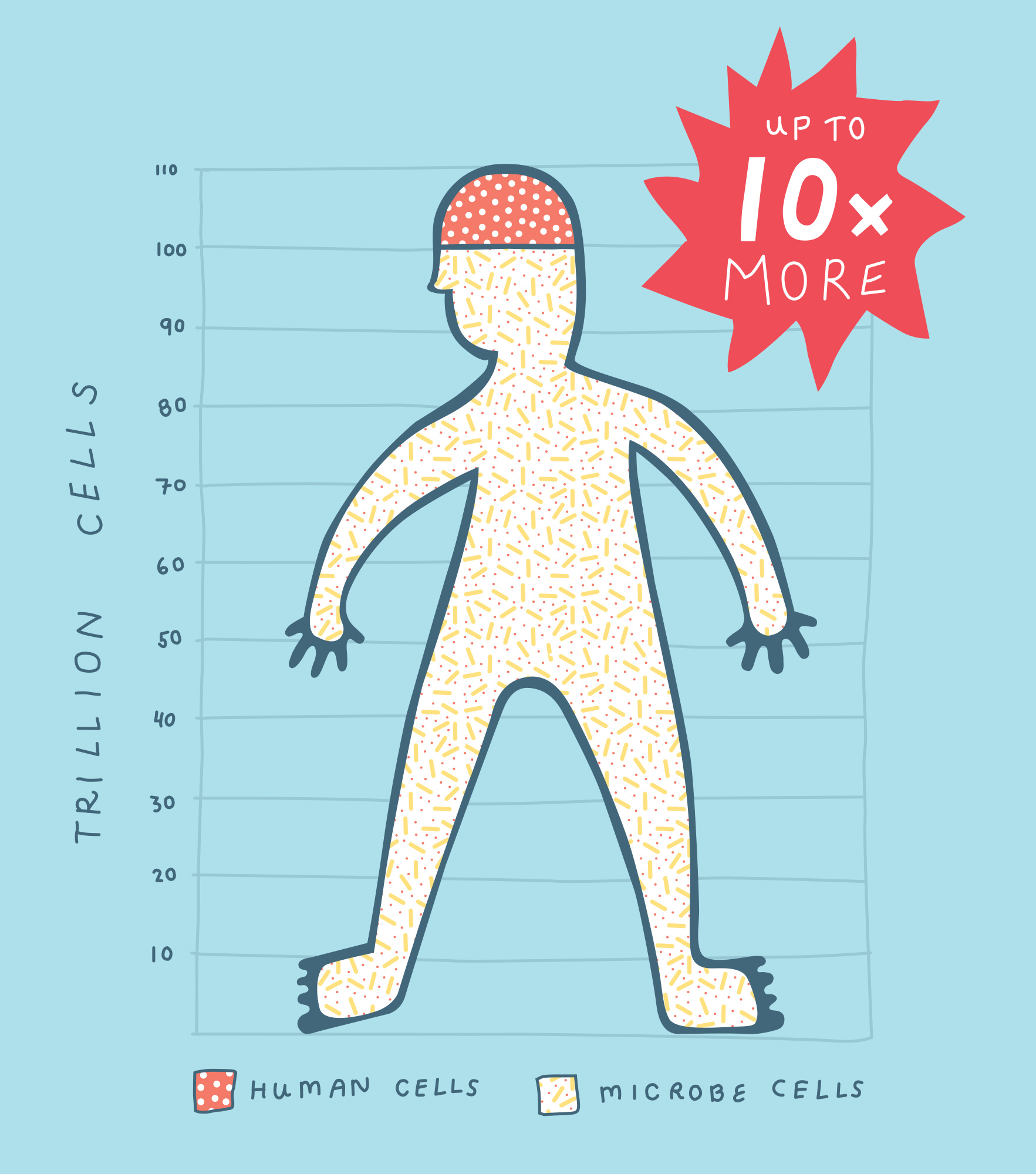
Obesity
Until a trip to Peru in 2008, I used to weigh quite a bit more. My wife Amanda and I hiked the Inca Trail and then spent a week in the Amazon, where we both came down with really nasty diarrhea — not what you want when you’re in a tent. We recovered, only to both have it flare up again. To treat it, we both took doses of the same antibiotic. When we got home, we resumed more or less the same diets and exercise patterns we’d had before we left for the trip. However, I lost about eighty pounds in a few months, going from obese to a healthy body weight.
The difference was remarkable. I had to buy new pants, and colleagues took me aside to ask if I had cancer or if there was something else they should know about. In contrast, Amanda lost no weight at all. I believe that the difference was related to a radical change in my microbes: we each responded differently to the same disease and the same course of treatment.
there’s a strong microbial component to obesity.
While we can’t, of course, draw scientific conclusions from a study of one couple, my experience here mirrors what published studies are increasingly showing. We’re learning that there’s a strong microbial component to obesity. Normal-sized, germ-free mice that receive a fecal transplant from an obese mouse become fatter themselves. And the experiment works regardless of whether that first mouse was fat because it had been overfed an unhealthy diet or because it had a genetic mutation that made it fat.
You might wonder if it’s the microbes that are doing this or if it’s something else in the stool? Good question. To answer it, Jeffrey Gordon, a biologist who directs the Center for Genome Sciences and Systems Biology at the Washington University School of Medicine in Saint Louis, and a team of researchers in his lab, asked whether you could isolate hundreds of individual strains of bacteria from an individual person, grow each strain in the lab (without the rest of the fecal matter), mix them together in similar proportions as in the original sample, and then transfer the differences in weight by transferring those bacteria to a new host. Indeed they could, proving that it was the microbes responsible for the weight gain — not a virus, an antibody, a chemical, or anything else in the stool. Even more remarkably, by isolating bacteria from lean people, we could design a microbial community that prevented a mouse from gaining the weight it would normally gain when housed with an obese mouse and exposed to its new roommate’s chubby microbes.
My lab and others haven’t been able yet to design a microbe community that actually slims down a mouse (or a person), although that’s certainly the goal. But in yet-unpublished research, other groups have reported using antibiotics to target the bacteria that proliferate on a high-fat diet, successfully slimming down the mice even if they still ate unhealthily.
It’s exciting to think that we could grow ourselves healthier and leaner microbiomes by altering our diets.
Many fad diets for humans are now targeted at improving your microbiome. But the evidence that these actually work is limited. We just don’t know enough about the ways in which particular microbes affect digestion and absorption to make a targeted intervention. In 2011, researchers at Harvard University published a study in the New England Journal of Medicine that found some foods are associated with weight gain, and others with weight loss. It won’t shock you to hear that fat-rich French fries are associated with weight gain, more so than any other food. But oddly, the two foods most associated with weight loss are yogurt and nuts, even though both can be high in fat. What exactly is going on? Well, microbes might play a role here. We know from studies in mice that particular microbes, or combinations of microbes, are associated with weight gain or weight loss. Could there be a connection between specific foods and the microbes that make us slimmer?
There is plenty of evidence that what you eat alters your microbiome, making it more habitable for some species and less so for others. Gary Wu, a professor of gastroenterology at the University of Pennsylvania, has shown that diet over the long term — a year or more — correlated very strongly with the overall microbiome. It was his team that demonstrated that people who ate a lot of carbohydrates (pasta, potatoes, sugars) tended to have a lot of Prevotella. In contrast, people who ate a lot of protein, especially meat (a la the Western diet), tended to have a lot of Bacteroides. These two genera of bacteria help us digest and metabolize our food, but they thrive on different foods. We’ve yet to untangle what influence Bacteroides species have on such typically Western diseases as obesity and diabetes, but there are some suggestive correlations. It’s exciting to think that we could grow ourselves healthier and leaner microbiomes by altering our diets.
Some dietary changes can rapidly alter our microbes. Peter Turnbaugh, a systems biologist then at Harvard University, and his colleagues got some hardy volunteers to either go vegan or to eat essentially a meat-and-cheese diet. Veganism caused little immediate change to their gut microbes. But the meat-and-cheese diet caused big changes overnight, increasing the kinds of bacteria linked to cardiovascular disease, such as Bilophila wadsworthia. So a sufficiently extreme diet can have bad effects quickly: an open question is whether there’s one that exerts good effects that fast.
Allergies and Asthma
The idea that reduced microbial diversity leads to asthma and allergies dates back to the work of David Strachan at St. George’s Hospital Medical School at the University of London. In the late 1980s, Strachan noticed that later siblings in larger families tended to have lower rates of hay fever and related allergies, and he suggested that catching infections from older siblings (especially classic childhood diseases) might help train the immune system to target real invaders, not dust mites. This idea, known as the “hygiene hypothesis,” essentially suggests that keeping ourselves too clean can lead to immunological problems, as our idle immune systems — unchallenged by the bacterial and viral pathogens that humans co-evolved with — get restless.
you still shouldn’t challenge your kid’s immune system by encouraging them to eat tainted meat or lick a hospital floor.
Since Strachan’s time, the focus has shifted away from common infections such as measles, colds, and flu, which are now believed to be strictly harmful. Instead, the modern hygiene hypothesis centers on our squeakyclean childhoods, which keep us insulated from diverse microbes from healthy sources, ranging from soil to leaf surfaces to domestic or wild animals. To understand how this works, think of your immune system as a radio: if you’re dialed into a specific station you can hear the music crystal-clear, but if you’re between stations then random signals can cause loud and unpleasant static. In a similar way, the immune system may find something else to latch onto if there is no signal. If you’re lucky it’ll be pollen or peanut butter that spikes through the “static,” causing allergies, but if you’re unlucky the immune system might latch onto your own cells, causing diabetes, multiple sclerosis, or other autoimmune diseases.
Translation for parents: you still shouldn’t challenge your kid’s immune system by encouraging them to eat tainted meat, lick a hospital floor, approach a rabid bat, or otherwise expose themselves to likely harmful microbes — but the modern hygiene hypothesis says encountering good microbes via dirt and contact with healthy, diverse people and animals may be good preventive medicine.
What’s the evidence for this? Well, it’s been growing rapidly, with more than one in four of the articles on record published just in 2014. Erika von Mutius at the Children’s Hospital of the University of Munich is a pioneer in this area. She has showed that exposure to farming in early life reduces the risk of allergies and asthma substantially, and that some of this effect can be explained by children coming in contact with straw, cows, farm milk, and certain bacteria and fungi. What about the impact of our invariably dusty homes, which seem to harbor all sorts of nasal irritants despite our best efforts with the mop? Contrary to expectations, von Mutius and others have demonstrated that exposure to allergens such as dust mites and cat hair does not explain the incidence of asthma.
Some intriguing recent findings suggest that microbial exposure during pregnancy, not just during childhood, may be important for reducing allergic diseases (although some caution is warranted here because in mice, viral attack or even simulated viral attack during pregnancy can trigger symptoms resembling autism). Other promising, yet still preliminary, results show that:
- several probiotics can relieve atopic disease and asthma (Lactobacillus salivarius LS01, in particular, can reverse atopic dermatitis symptoms in some children).
- changing animals’ microbiota with antibiotics can induce allergic diseases.
- certain microbe species can reverse food allergies in mice or prevent the food allergies from developing in the first place — while others can cause them.
exposure to diverse microbes, whether through older siblings, pets, or through good old-fashioned playing outdoors, seems to help.
The data on whether breast milk can reduce the incidence of these diseases is somewhat equivocal: the few robust studies that have been done tend to show modest if any effects. Interestingly, simply living in a setting with more diverse microbes (say, a home with a backyard garden rather than an urban apartment far from any parks) seems to decrease risk of allergic disease. And it’s clear that one’s setting exists indoors, not just outdoors. Early exposure to dogs, especially prenatally and in the first year of life, appears to decrease allergy risks later. Surprisingly, we showed that having dogs, but not having kids, increased human microbial diversity for couples living together. However, exposure to dogs and cats in adolescence increases the risks of asthma and eczema.
It’s tricky to add up all this early evidence into a prescription for lowering your child’s risk of asthma and allergies. I’d sum up the recommendations like this: have a dog (but make sure you start early, ideally prenatally), live on a farm where your kids are exposed to cows and straw, avoid antibiotics early in life, and perhaps take probiotics and breastfeed (although the evidence for those last two is preliminary at present). In general, exposure to diverse microbes, whether through older siblings, pets, or livestock — or through good old-fashioned playing outdoors — seems to help, even if scientists are still sorting out the specific microbes involved. It may be that diversity itself is most important.
This text is taken from Follow Your Gut: The Enormous Impact of Tiny Microbes, by Rob Knight, with Brendan Buhler (TED Books/Simon & Schuster), available now. Illustrations by Olivia de Salve Villedieu.

